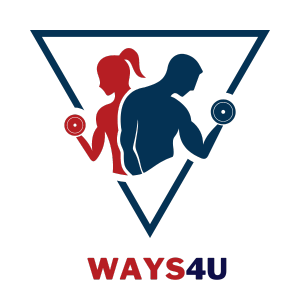Followed a Paleo Regimen, say nyt. The renowned New York Times crossword puzzles are notorious for their cryptic clues and convoluted wordplay. One of these perplexing clues, one that has baffled many solvers, is “Followed a Paleo Regimen.”
” Here, we will explore this elusive clue in-depth, investigate the potential answers, and provide insight into the broader world of solving crosswords, focusing primarily on techniques for deciphering such intricate clues.
Followed a Paleo Regimen say nyt Crossword
He revered the NYT crossword, a daily staple for many fans, ranging from novices to seasoned experts. Published daily in the famed New York Times newspaper and its mobile app, the crossword’s difficulty fluctuates throughout the week.
Mondays usually feature elementary puzzles, while Saturdays are the most challenging. The colossal Sunday crossword, larger and remarkably sophisticated, has its unique charm.
“Followed a Paleo Regimen” is a clue that falls under the genre of dietary and lifestyle-themed puzzles. To crack this clue, it is imperative to comprehend both the context of the Paleo diet and the standard structure of answers in the illustrious NYT crossword.
What Does “Followed a Paleo Regimen” Mean?
The Paleolithic diet emulates how our ancient ancestors lived and what they consumed in a pre-agricultural world. Only whole plant and animal foods that would have been hunted or gathered are incorporated, like grass-fed meats, seafood, eggs, vegetables, fruits, nuts, and seeds.
The regime excludes processed items, sugars, grains, legumes, and dairy. Adhering strictly to this nutritional routine means abandoning modern convenience foods and building meals from raw ingredients like Paleo Man.
When contemplating the clue “Adhered to a Prehistoric Nutritional Plan,” more imaginative verbs beyond just “followed” or “ate” should be considered to fit the crossword precisely. Words portraying commitment or dedication to such a specialized eating lifestyle, like “practised,” “subscribed to,” or “religiously observed,” may better complement this clue and fit the grid.
Possible Answers to “Followed a Paleo Regimen”
ATEPALEO: This answer contains “ate” (a verb you always see in crosswords, which is used to mean ate food) and pairs it with Paleo. I think the theme is fine but a bit basic and predictable for solvers who have diet adherence on their minds.
PRIMAL: As you can see in this context, PRIMAL communicates the primal diet, sometimes considered a subset of Paleo. You may more likely know the word in a more complex puzzle where the solver is to figure out how all those diet words are related.
CAVEMANDIET: A more literal answer that might appear in a themed puzzle focused on historical or prehistoric lifestyles. This would be a longer, more descriptive answer, fitting if the crossword grid allows.
WENTPALEO: This phrase describes the reaction of those who go about their preening lives while they flirt with trying Paleo.
Because the NYT crossword heavily uses wordplay and puns, being familiar with vegan-related terminology can pay off when you find an answer. This could hint at various tenets of the Paleo diet (specifically, its focus on natural, unprocessed foods and hunter/gatherer roots).
Strategies for Solving NYT Crossword Clues
We must understand the context. The fact that the Paleo diet is a dietary regimen will lead you to terms focused on kinds of food rather than random/instead divorced words.
Use the other answers in the puzzle that this clue crosses with to get your final answer. This helps reveal the clues matching it so you can fill in specific letters and limit your potential answers.
The word length reference is in the puzzle grid. But remember that the answer to an NYT crossword always has its length listed, allowing us to eliminate answers of different lengths without even considering them. Try to devise other ways to describe the exact actions’ synonyms. On “Followed a Paleo Diet,,,” you might say, Did PALEO, WENTPAL, EO,,.etc..…
Tools–OnlineWordplayscom or similar. Also, crossword solvers accept known letters/patterns for answers. These are more useful when you get stuck with a tough clue. Play with the various verb tenses and forms. The past tense “Followed” suggests that responses should be based on a former act, e.,g. ADOPTED FOLLOWED WENT.
Crossword Puzzles and Popular Culture
Another thing that makes the NYT Crossword special is its adoption of pop culture, news events, and other things many people recognize.
The Paleo diet was popularized in the late 2000s and is still a hot topic for health enthusiasts. This makes it current and challenging, a trait shared by crossword puzzles.
Suppose you consider how the NYT crossword has only set clues for top movies, trending diets, one-way political events, or viral internet memes that are impossible to miss out on unless you live under a cultural rock. The main advantage of current events for solvers is knowing everything necessary to solve them more quickly.
The Importance of Puzzles in Cognitive Health
Crossword puzzles are more than a hobby; they also help with cognitive health. Exercising the brain with active activities enhances memory, increases vocabulary, and solves problems. Such puzzles can stave off mental decline and improve overall brain activity.
Moreover, puzzles that span the gamut of categories—diet to lore and lifestyle (as with the clue for Paleo regimens)—allow solvers to build up a wealth of general knowledge, which makes critical thinking and creativity possible.
The Evolution of the NYT Crossword
From timeless wordplay to recent pop culture, nodsthemes became more neutral to reflect a diverse audience over the decades that followed over the decades that followed. My popularity has exploded because of its digital presence via the New York Times Crossword app, which permits day-by-day connection.
It also offers more hints and mini crosswords, accommodating experts and those just learning about cryptic clues.
One uses Mini crosswords, for instance—tiny puzzles that usually take a fraction of the time of their bigger sibling but are just as fun to solve. It skies more than puzzles while maintaining an up-front The New York Timesjargon clarity that it nonetheless does thanklessly under its careful, discerning service of crossword kindness.
Solving the NYT Crossword: Tools and Resources
To quickly squeeze out a clue like Followed a Paleo Regimen, solvers tend to band together different resources:
Crossword Solver Websites: Sites such as Wordplays, Crossword Solver, and com can provide you with several potential solutions by matching up the specific letters and known possible kinds.
Crossword Puzzle Databases: Searching a database of crossword puzzles and their solutions can be an excellent way to double-check your work on a clue or even review old puzzles to tackle new ones better.
Crossword Community Forums: First, it helps to read something familiar in the crossword community. Engage with people on forums or social media to get tips when you have problems solving difficult clues.
Mobile Apps: You can access puzzles in apps like the NYT Crossword app and other crossword-specific apps, which allow for interactivity (for example, checking your answer or getting a hint).
Practical Application: Solving “Followed a Paleo Regimen”
Let’s apply these strategies to solve the clue “Followed a Paleo Regimen” step-by-step:
- Understanding the Clue: The clue hints at someone adhering to the Paleo diet. Think of verbs associated with dieting, such as “ate,” “dined,” “adopted,” or “lived.”
- Considering Word Length: If the crossword specifies an 8-letter answer, options might include “ATEPALEO” or “WENTPALEO.”
- Cross-Referencing: Look at intersecting words in the grid. If the down clues intersecting with this answer provide letters like “A” or “L,” it might confirm “WENTPALEO” or “ATEPALEO.”
- Using Synonyms: Think about synonyms or related phrases. If the clue’s format or theme is more historical, something like “PRIMAL” could fit.
- Double-Checking with Resources: Use a crossword solver or online database to verify the possible answers, ensuring the solution is correct.
By following these steps, solvers can effectively narrow down and determine the correct answer, enhancing their puzzle-solving skills and enjoyment of the game.
My Opinion
Another excellent way puzzles can modernize the concept of wordplay is seen here with this clue from the one and only NYT crossword: “Followed a Paleo Regimen.” Puzzles can be tricky, combining knowledge from context and clues to consider and sometimes resorting to help or aid from resources/the crossword community.
Crossword puzzles are a practice, especially when participating in crosswords from established publishers like the New York Times. It’s a good mental game to keep your brain alert and intelligent.
If you encounter a clue like this next time, remember the tactics of your discussion, enjoy solving it, and feel satisfied when you do so!
The next time you get tripped up on a diet caption of the New York Times crossword or any other topic, take a step back and think about what might be happening in that little square.
It could change your perspective regarding whether Pacino was alive during WWI… Just kidding! USE YOUR RESOURCESIchiro Suzuki had somebody rooting for him there just as Dracula did, but if phenomenon A-E spawned before O’? Happy solving!

















Leave a Reply
View Comments